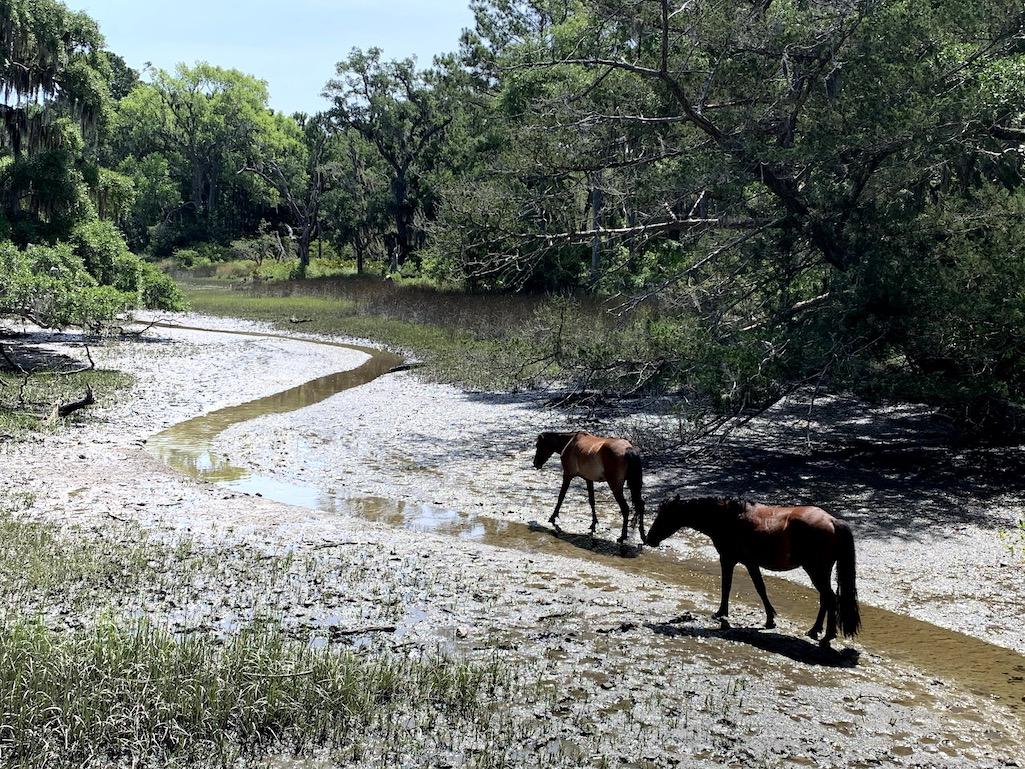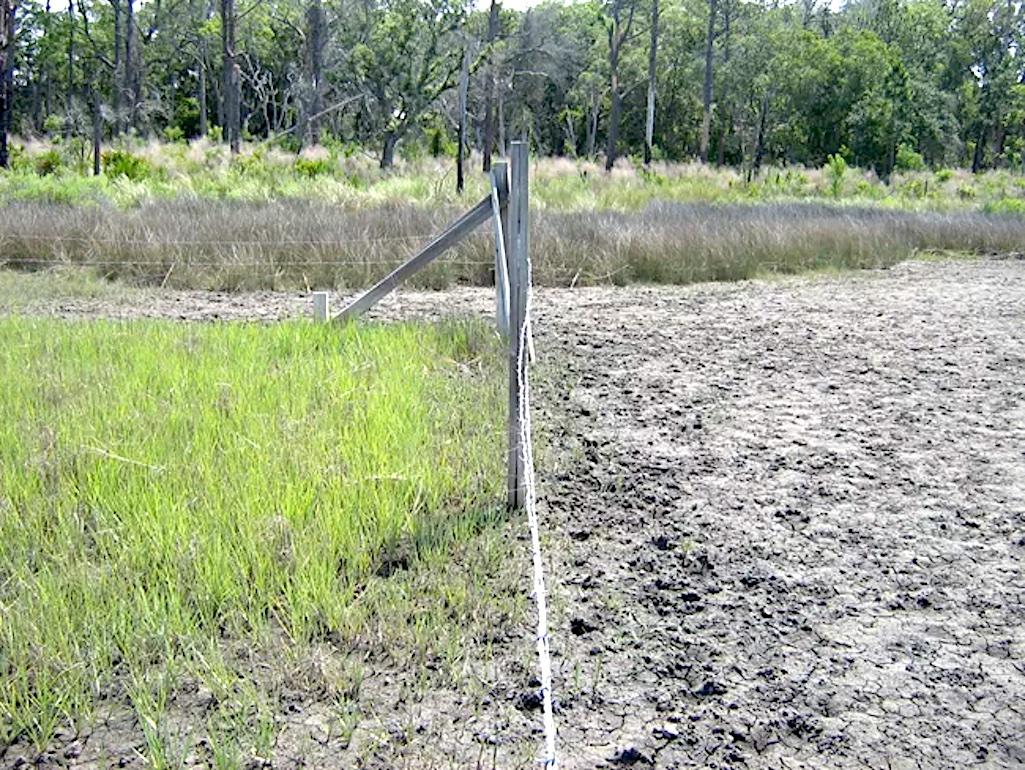
The Justice Department has argued that the National Park Service isn't responsible if feral horses harm threatened and endangered species at Cumberland Island National Seashore/Wild Cumberland
In a baffling rationale, the National Park Service is willing to let feral horses at Cumberland Island National Seashore trample threatened and endangered species because it doesn't see itself liable for what horses do.
That's part of the Justice Department's position in arguing for dismissal of a lawsuit asking that the Park Service remove the horses because they are impacting natural resources across the national seashore off Georgia's coast.
"Defendants are unaware of any cases in which a court has held that a federal agency is liable for a take of one animal perpetrated by another animal," DOJ's lawyers wrote. "Plaintiffs cannot show that the horses effected a take or committed an offense under Section 9 of the [Endangered Species Act] because the take prohibition applies only to persons."
While that techically might be true, the Park Service does have a mandated responsibility to protect the seashore's natural resources, which include not only official wilderness, sensitive marshlands, and dune systems but also the loggerhead sea turtles [an endangered species] and piping plovers [a threatened species] that use the seashore for nesting and resting. And the agency, in 2018, even acknowledged that the horses, which are believed to have arrived on the island around 1740, are having harmful impacts on the seashore's natural resources.
So why sit back and do nothing?
Well, most likely because horses are a hot topic, politically, and the Biden administration has no interest in crossing the horse-loving public. Just look at the uproar caused by the Park Service's consideration of a proposal to remove feral horses from Theodore Roosevelt National Park in North Dakota. In that park, horses are considered an elemental part of the old West.
If the Park Service really has decided not to come to the aid of T&E species — and native species, in general — unless they're being impacted by humans, we're going to see a lot of species blink out.
Of course, that's not the universal approach being taken by the agency, and we're not even sure the Park Service's leadership agrees with the Justice Department's take on this legal battle as they didn't respond to our inquiry on that point.
But practices elsewhere in the National Park System speak pretty loudly, and the Park Service has been aggressive in striving to protect T&E species as well as the ecosystems within the parks.
At Haleakalā National Park in Hawai'i, the Park Service is working to protect endangered bird species by trying to upend the reproduction of mosquitoes that carry avian malaria, which is deadly to the birds. At Everglades National Park, the agency is supportive of efforts by the Florida Fish and Wildlife Conservation Commission to remove as many non-native Burmese pythons from the Everglades as possible, and park staff has been working hard to remove non-native black-and-white Argentine tegus, which have a taste for bird eggs.
The Park Service also has worked — successfully in places — to remove non-native vegetation from the Everglades, feral hogs from Great Smoky Mountains National Park and Pinnacles National Park, non-native mountain goats from Olympic National Park, and even non-native trout from high-country lakes in Sequoia and Kings Canyon national parks.
Even if Cumberland Island's horses were native and not descended from livestock herds, the Park Service should be managing their impacts, as is done with too many deer at parks such at places such as Valley Forge National Historical Park and Gettysburg National Military Park and too many elk at Wind Cave National Park, just to cite three more instances of active management of species' impacts.
For the Justice Department to say the Park Service shouldn't be responsible for impacts feral horses are bringing to the seashore's T&E species and ecosystems is a perversity of the National Park Service Organic Act, the agency's 2006 Management Policies, and even the national seashore's own view of the impacts the horses are having.
The horse herd on Cumberland likely consumes between 200 to 400 tons of vegetation each year, removing up to 98% of it in areas they frequent. This impact can cause damage to island resources by destabilizing dunes and streambanks, selectively removing native grasses and forbs, and threatening the biodiversity of native plants and wildlife. The island is home to numerous historic structures and archaeological sites, some of which have also been impacted by effects of the horse population. -- National Park Service.

The use of fenced areas that prevent horses from grazing there demonstrated the impact of feral horses on the Cumberland Island’s landscape/NPS file
Thankfully, this Justice Department wasn't involved with the work done at Channel Islands National Park to protect the Channel Island fox, when it was an endangered subspecies, from going extinct. Beginning in 2004 the U.S. Fish and Wildlife Service and its partners worked to eliminate or greatly reduce the primary threats facing the fox, namely predation by non-native golden eagles, disease and low population numbers. By 2016, in what the Fish and Wildlife Service called "the fastest successful recovery for any Endangered Species Act-listed mammal in the United States," it declared victory in saving the fox.
Would the Biden administration have allowed the eagles to wipe out the foxes, which aren't quite as revered as equines?
And at Yellowstone National Park, while native Yellowstone cutthroat trout aren't a federally listed threatened species, the Park Service didn't wait for that listing to come about before moving to dispatch non-native lake trout that prey on the smaller cutthroat in Yellowstone Lake. There also has been work in Glen Canyon National Recreation Area, Glacier National Park, and North Cascades National Park, in addition to Sequoia and Kings Canyon, to remove or block the arrival of non-native fish.
For the Justice Department and Park Service to argue on one hand that they have no responsibility to protect ESA-listed species from feral horses while the Park Service already has removed non-native cattle and is working to remove feral hogs from the seashore because of their impacts is particularly brazen when the Interior Department just announced nearly $41 million in grants to help with land acquisition and conservation planning as part of a year-long "celebration ... in preventing imperied species extinction, promoting the recovery of wildlife and conserving the habitats upon which they depend."
Are Interior Secretary Deb Haaland and Park Service Director Chuck Sams on board with DOJ's rationale?



Comments
"Are Interior Secretary Deb Haaland and Park Service Director Chuck Sams on board with DOJ's rationale?"
Likely not. They're bureaucrats appointed and confirmed because of their affiliations, not expertise or knowledge of NPS assets.
Why not place the blame where it lies: AG Garland.
Impeach Garland now.
My entire career was in endangered species conservation. I often wondered: Why do resource management agencies (state as well as federal) constantly have to be sued into doing the right thing?
It's hard for me to believe that the whole reason why the DOJ wouldn't order the horses to be taken care of is because they "fear the horse-loving public." Would it not cost a lot of money for an already understaffed agency facing budget cuts? I think the argument that the feral horses are being left alone is pretty thing as described in this article.